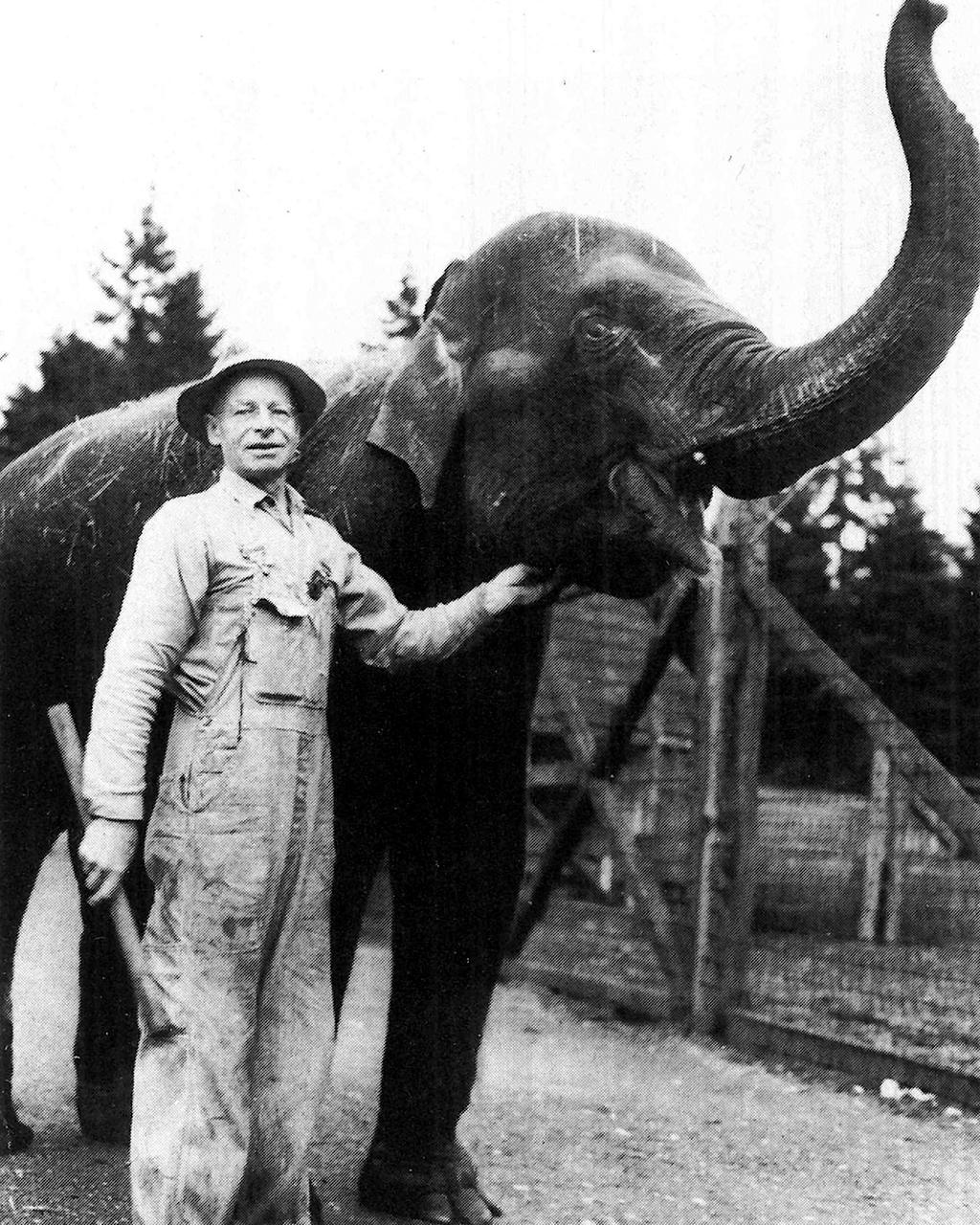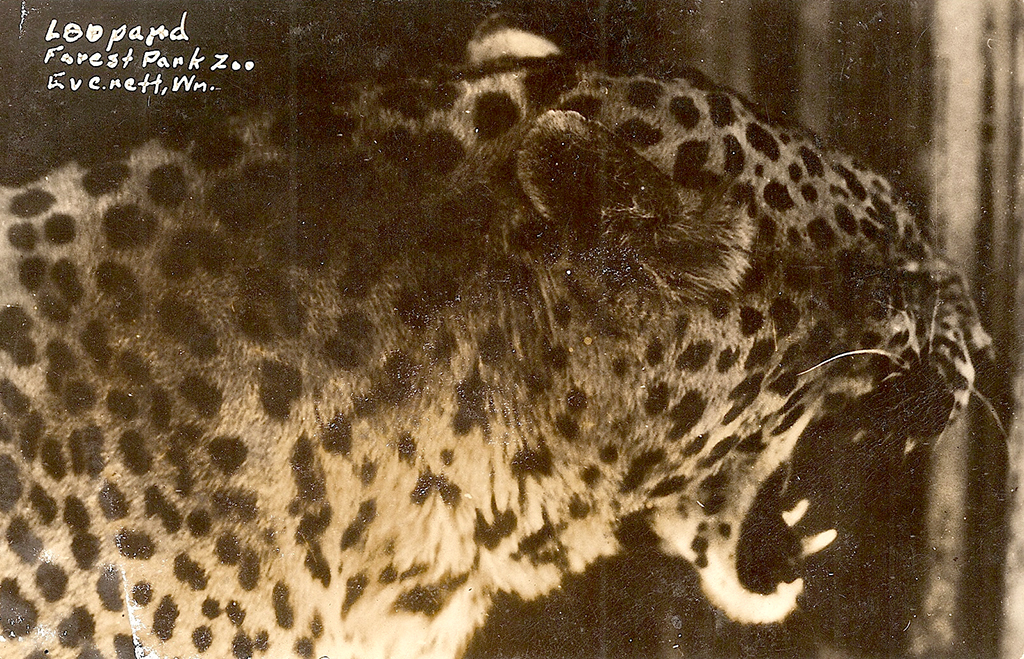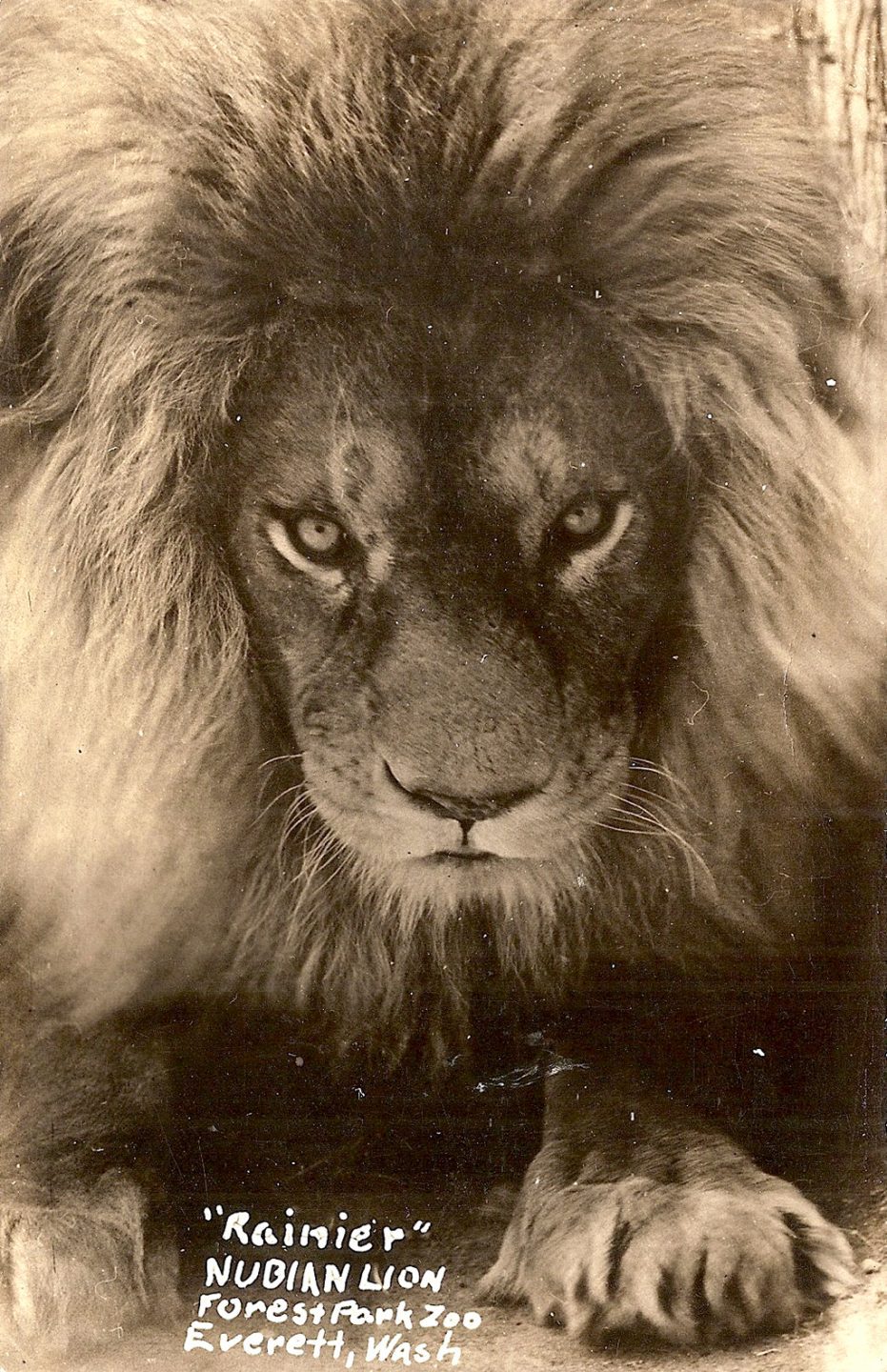-
Forest Park Zoo
Forest Park Zoo
Everett’s Zoo is a large part of Forest Park history, lasting from 1914 to 1976. From a small start of three deer, two coyotes and two pelicans gifted to the city, the zoo grew to more than 200 animals at its peak during the 1950s. A 1923 zoo census listed its residents as a kangaroo, four bears, two bison, three coyotes, a marmot, rabbits, mink, three elk, goats, a badger, raccoon and a skunk. Later other animals were added including lions, a zebra, a leopard, monkeys, pheasants, peacocks, buffalo and an elephant.
The zoo’s location ran mainly from the south edge of this upper area and then downhill from a path close to where the Animal Farm is today. Monkeys, peacocks and other small animals were housed close to this point, leopards, cougars and lions caged on the downhill slope. For a time there were even buffalo. Local seniors vividly recall the horrible smells in the Monkey House.
At the bottom of the present-day Animal Farm was the home of Rosie, a beloved young Indian elephant who is still fondly remembered by seniors who visited as children. Read Rosie’s story at Point 8.
To feed the animals, Superintendent Hall raised vegetables and bargained for meat and fish with the local game warden, farmers and butchers.
The Forest Park zoo was typical for its time, created largely with good intentions to put people in closer touch with nature. A popular opinion held that wild animals were best cared for and preserved in a zoo setting. When television brought filmed-on-location nature programs into homes in the 1950s, public attitudes changed and their support lessened for amateur zoos. The ones that continued modernized their animal living areas, making them larger and more natural and hired trained staff.
Most cities could not afford to modernize, much less maintain their zoos. Slowly the Forest Park animals were transferred to other places and by 1962, most of the Forest Park Zoo was gone. The colorful peacocks stayed on, roaming the park and nearby neighborhoods for many years.
Continue south of the marked Recreation Building to Point 4.




